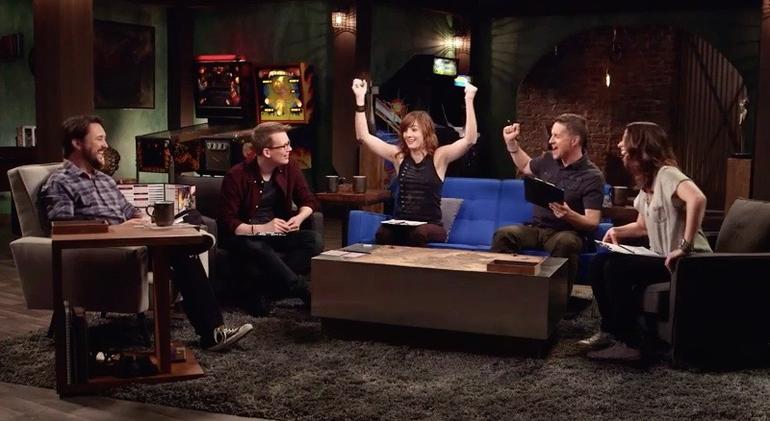Today’s #RPGaDAY2015 topic has the clunky title Favorite Media You Wish Was an RPG, which really translates to “What thing would you like to have licensed as an RPG?” I sort of answered this last year on day sixteen ((Day 16 was “Game you wish you owned.”)) when I went with Crimson Skies. However, recently I’ve been really wanting something set in Cherie Priest’s Clockwork Century novels.
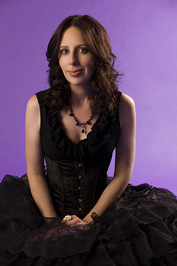 I initially resisted getting into the author’s works, primarily because the geekerati ((You know, the geek media celebrities with their insulting “Hey nerds!” calls to action.)) were heavily pushing the first book, Boneshaker, and it seemed like you had to read it. It’s the hip new thing our nerdy alt-culture embraced! I wound up holding off a year before reading it and man, was I wrong. It was good. Strangely good.
I initially resisted getting into the author’s works, primarily because the geekerati ((You know, the geek media celebrities with their insulting “Hey nerds!” calls to action.)) were heavily pushing the first book, Boneshaker, and it seemed like you had to read it. It’s the hip new thing our nerdy alt-culture embraced! I wound up holding off a year before reading it and man, was I wrong. It was good. Strangely good.
See, when I exhibited at San Diego Comic Con back in 2004, it seemed like zombies were over. There were plenty of zombie things out and it seemed passe. Here we are, more than a decade later, and zombies just won’t die out. Boneshaker came around that time, with a fusion of steampunk and zombies in a walled city filled with toxic gas and it just was plain good. Once Priest went outside those walls to explore her world — more dieselpunk than steam — the series went from good to seriously interesting for me.
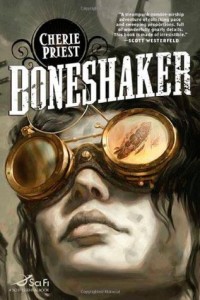 The American Civil War had been going on for much longer than in our real history: alt-history, specifically around that war, is something that always fascinated me. I loved looking at what spin Priest put on the political situation. Texas, her own independent power, checking the South and North, occupying New Orleans and controlling the Mississippi River. Mercy working in the Confederate hospital, travelling west across a wartorn countryside. The Pinkertons and their role in the Union. Everything outside the walled city of Seattle would make for a great game. ((As an aside, I always liked the craziness of Deadlands, also set in the same alt-history period, but never enjoyed the actual game.))
The American Civil War had been going on for much longer than in our real history: alt-history, specifically around that war, is something that always fascinated me. I loved looking at what spin Priest put on the political situation. Texas, her own independent power, checking the South and North, occupying New Orleans and controlling the Mississippi River. Mercy working in the Confederate hospital, travelling west across a wartorn countryside. The Pinkertons and their role in the Union. Everything outside the walled city of Seattle would make for a great game. ((As an aside, I always liked the craziness of Deadlands, also set in the same alt-history period, but never enjoyed the actual game.))
Where I’m at now: I’m trudging through The Inexplicables, the penultimate book in the series. Trudging, I say, because it takes us back within the walls of Seattle — to me, the least interesting place in the world she created (I want to go outside!) — and follows a protagonist that, several hundred pages into the book, I still dislike. I’ve actually been skimming the book instead of reading, because I want to get to Fiddlehead, which is supposed to resolve the ongoing war and take place outside, in fresher air.
All while reading the series, I thought how much I wanted to play a game set in the world. However, the series has ended and the author has gone off to other writing endeavors. The time to pick this up as a licensed RPG was three or four years ago.
But I wish someone had.
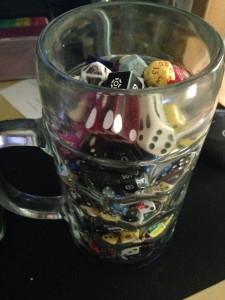 Next to the monitor I’m typing this on, I have a one liter glass stein with almost all of my other dice. And now that I’ve written this far, I realize that my favorite die is in that stein: It’s the Ghostbusters Ghost Die.
Next to the monitor I’m typing this on, I have a one liter glass stein with almost all of my other dice. And now that I’ve written this far, I realize that my favorite die is in that stein: It’s the Ghostbusters Ghost Die.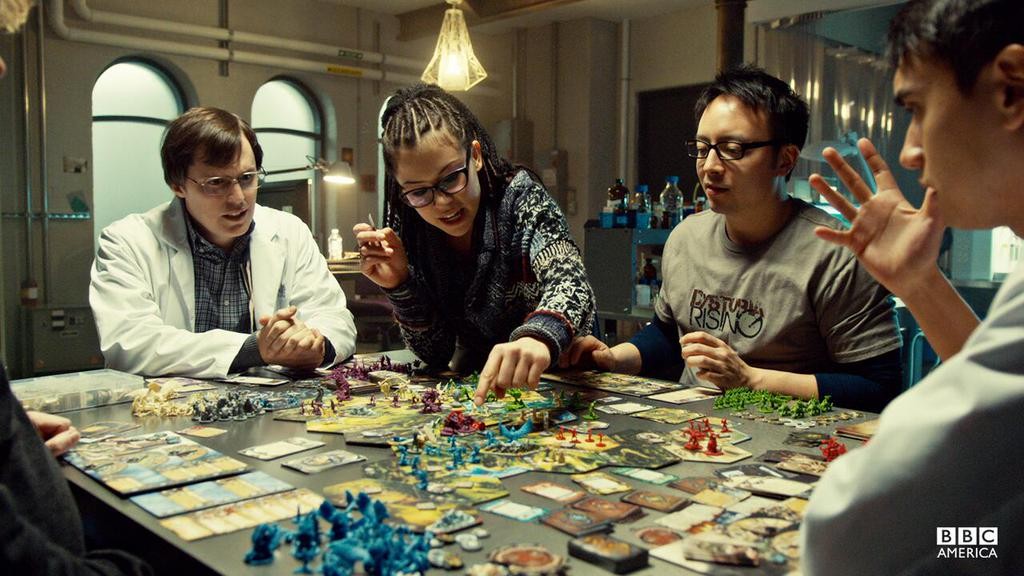
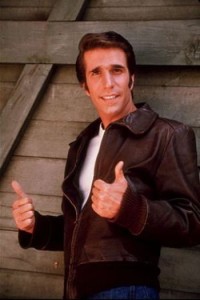 That Dragon Age episode, I particularly didn’t like. It’s an awesome example of what happens when you don’t have a social contract or good buy-in to the game you’re about to play. Pramas brings a dark fantasy game, Hardwick wants to play goofy fun dorkiness, and Wheaton just wants to have fun with his friends. After Hardwick describes his character as Fonzie, whose goal is to sleep with every woman in the setting, there’s a cut to Pramas diplomatically talking about how every group has a player like this. ((Which is complete BS, but this is a show, so rather than scream out in frustration, Chris Pramas takes the high road.)) It’s an amazingly awful start to an episode that several people believe is a good example of gaming. When I mentioned this on Google Plus, one of the responses was, “it felt like Hardwick was mocking my favorite hobby. It really was not fun to watch.” I agree.
That Dragon Age episode, I particularly didn’t like. It’s an awesome example of what happens when you don’t have a social contract or good buy-in to the game you’re about to play. Pramas brings a dark fantasy game, Hardwick wants to play goofy fun dorkiness, and Wheaton just wants to have fun with his friends. After Hardwick describes his character as Fonzie, whose goal is to sleep with every woman in the setting, there’s a cut to Pramas diplomatically talking about how every group has a player like this. ((Which is complete BS, but this is a show, so rather than scream out in frustration, Chris Pramas takes the high road.)) It’s an amazingly awful start to an episode that several people believe is a good example of gaming. When I mentioned this on Google Plus, one of the responses was, “it felt like Hardwick was mocking my favorite hobby. It really was not fun to watch.” I agree.